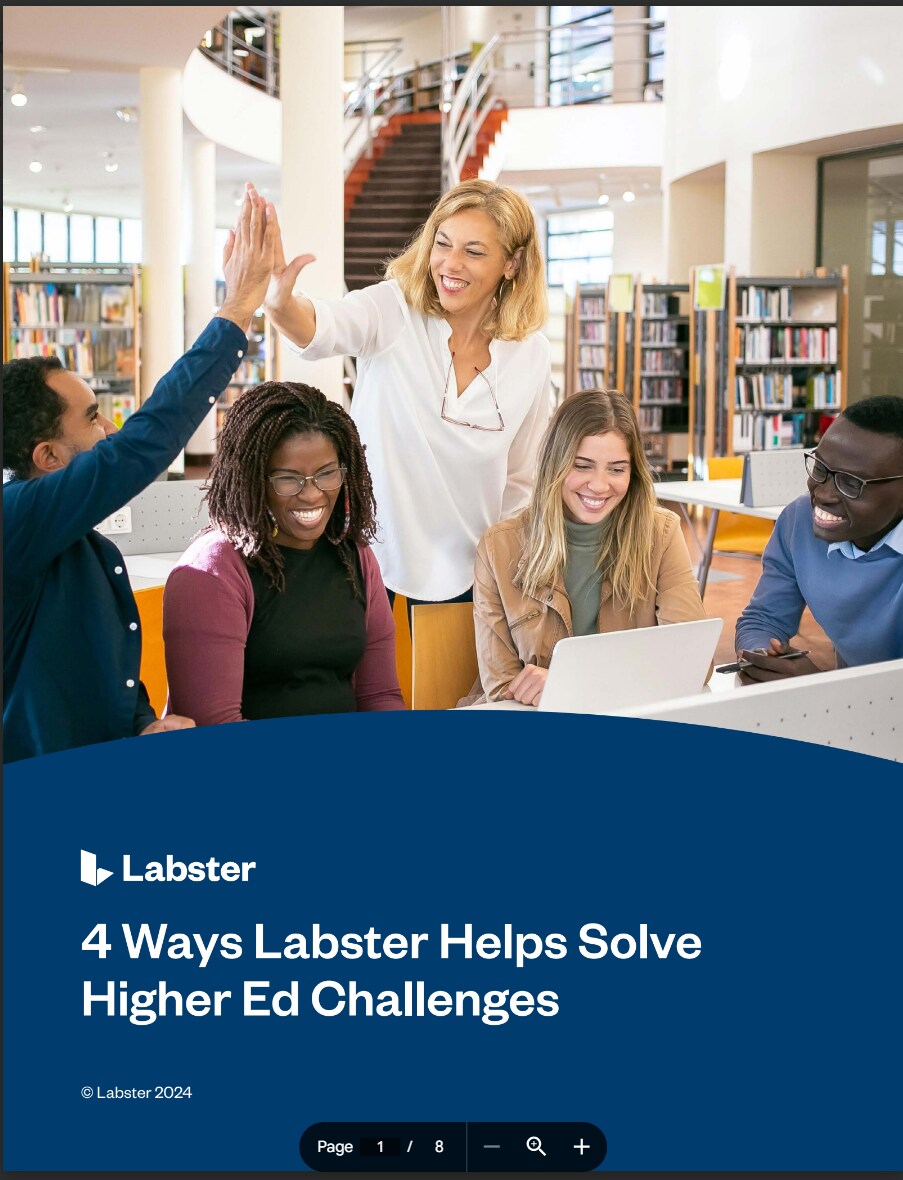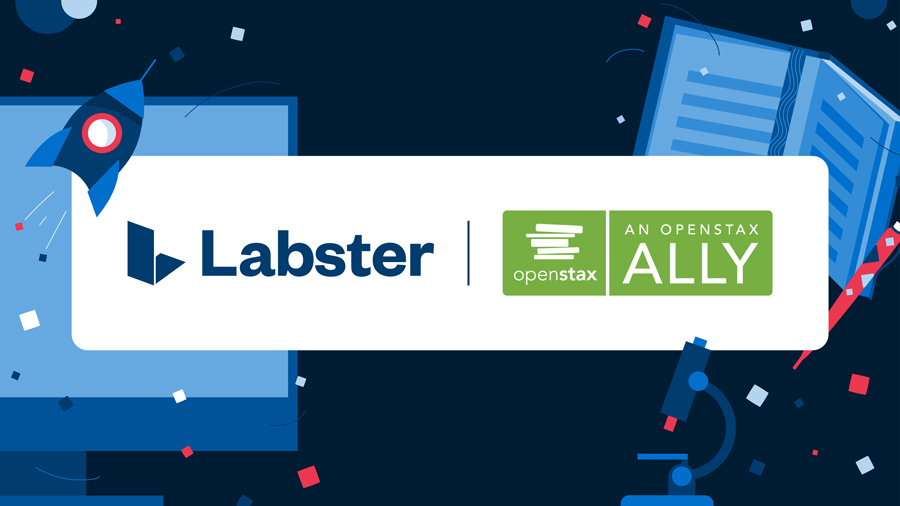
4 Challenges Facing Higher Ed
- Achievement gaps persist even as diversity increases
Achievement Gap: Underrepresented Minorities
Compared with their proportions of the college-age population, Latinx, Blacks, and Native Americans account for a disproportionately low share of STEM degree recipients. While URM (underrepresented minority) students declare STEM majors at a similar rate to White and Asian students, they tend to earn lower grades and have higher attrition rates, even dropping out of college without a degree at a higher rate (1).
Achievement Gap: Women
Women earn 57% of all bachelor's degrees in the US but remain underrepresented in most STEM fields at all post-secondary education levels (2).
Women both declare STEM majors less frequently and persist at a lower rate than men, with 65% of men who major in STEM persisting compared to 48% of women. According to a 2022 multi-institutional study by Koch et al, women’s sense of self-efficacy, or self-perceived STEM ability, is a significant factor impacting STEM major persistence. In fact, researchers found that women consistently rated their STEM ability lower than men even when STEM ability was equal. This finding suggests that interventions aimed at increasing STEM self-efficacy could increase the persistence of women in STEM.
- College Readiness is Declining
Fewer high school students are prepared for college science courses. In 2023, only 31% of all graduating students met the ACT College Readiness Benchmarks for Science, a decline from 35% in 2021 (3). Significantly, even among students who specifically indicated their interest in pursuing a STEM field, only 48% met the ACT benchmarks for science, indicating a lower probability of success in credit-bearing, first-year college courses.
Significantly, when these less-prepared students actually begin their first year of college, they are often placed in so-called “gateway courses”. STEM departments historically offer introductory courses that can cost-effectively accommodate up to 1000 students per semester. Introductory courses of this size are often referred to as “gateway courses” because they are prerequisites for further study. Unfortunately, URM students who receive a C- or below in gateway courses are more likely than their well-represented peers to transfer to a non-STEM major or leave college altogether (4).
- Institutions Are Facing Financial Headwinds
Painful program cuts and the closure of over 300 degree-granting postsecondary institutions between 2016 and 2023 are a sobering demonstration of the financial reality facing U.S. colleges and universities, and CFOs are worried.
"30% of university business offers who think their institution is in worse shape now than it was in 2019 cite a painful mix of decreased net tuition revenue (89%) and salary and benefits expenses related to inflation,” according to Inside Higher Ed's 2023 Survey of College and University Business Officers (5).
- Public Confidence in Higher Ed is Declining
Unfortunately, overall public confidence in higher education is declining in the United States at the same time that institutional net revenues have declined and expenses have crept upward.
Americans’ confidence in higher education has fallen to 36%, sharply lower than in two prior readings in 2015 (57%) and 2018 (48%). In addition to the 17% of U.S. adults who have “a great deal” and 19% “quite a lot” of confidence, 40% have “some” and 22% have “very little” confidence, according to a Gallup poll (6).

4 Ways Labster Helps Solve Challenges in Higher Ed
- Labster Engages Students
Students who don’t participate don’t learn. In Labster, relatable stories and mini-games make learning stickier so students engage more with course content.
In a 2023 international survey, students reported feeling high levels of engagement when using Labster. The majority of students expressed that Labster helps them stay more engaged and motivated in their learning and helps them be successful in their science courses. Example student voices:
• “Labster helps me stay more engaged and motivated in my learning.”
• “It keeps me so engaged and alert. It is fun and rewarding.”
• “Labster offers a very interactive take on learning and kept me engaged throughout the whole course. I feel like I’ve never learned in a more efficient way.”
• “Labster helps students like me by keeping me engaged with the interactive environment.”

- Labster Improves Academic Outcomes
Whitcomb & Singh (2021) found that students who drop out of STEM majors show an early warning sign: lower average course grades in gateway courses. The good news is that underrepresented students who earn a C or better in introductory STEM courses are likely to persist, and Labster can play an important role in helping them succeed.
- 2023 research found that, in multiple sections of Biology I and II courses at the University of Texas at San Antonio, DFW rates declined from 10.88% to 5.45%, a 5-point decrease, after using Labster (7).
- The same 2023 study found that the proportion of students with A or B grades in Biology I was statistically higher with Labster use, improving from 71% to 83%, a 12-point bump (8).
- Students who start with Labster want to continue in STEM. Research shows their interest in taking further STEM courses is 5 times higher after learning with Labster as a pre-lab assignment (8).
- Labster Builds STEM Equity
Research shows that Labster’s immersive digital learning experiences increase practice and self-confidence. Self-paced science simulations create psychological safety and foster mastery learning. The result supports students’ perseverance, especially through gateway courses.
Developing Perseverance
Self-efficacy is the belief in one's ability to succeed and supports perseverance and grit. Students who have higher self-efficacy are more likely to persevere in the face of challenges. (9).
“Setting up an experiment independently for the first time is a challenge … If the experiment fails that first time (which is likely!), you need to be prepared to try again. You might think about giving up. What makes the difference in your decision to persist or retreat?” (10).
- Students who had low self-efficacy but strong academic backgrounds received the same grades as those with high self-efficacy and weaker academic backgrounds (11).
- Low-performing students rate their self-efficacy 40% higher after learning with Labster than medium-performing students (11).
Developing Science Identity
A 2013 study of science identity among college students measured the perception of URM students who see themselves as “science people” who are capable of succeeding in a scientific field. The researchers found that Hispanic women students had the lowest level of science identity, indicating they may face greater challenges in succeeding in STEM fields (12).
- This finding puts a finer point on a Labster research finding at the University of Texas San Antonio: the students who learned with Labster, the majority of whom were Hispanic women, had better grades and higher average enrollment retention (7).
- Labster Increases Course Offerings at Lower Cost
Offering lab science courses typically demands a significant amount of departmental budgets. Yet, without adding a square foot of lab space or a single additional member of instructional staff, institutions are able to sustain or even increase their STEM offerings with Labster immersive digital learning.
For example, instructors can:
- Teach with Labster in a live in-person course, encouraging students to work together in small groups and collaborate to navigate each immersive simulation
- Teach with Labster in an asynchronous hyflex course, assigning students to complete a Labster simulation individually before they arrive on campus for a practical lab activity
- Assign Labster to each online student as a tool to visualize and interact with practical lab activities.
Using Labster also saves direct costs on practical labs. For example, Labster estimates that using a virtual lab in place of a traditional spectrophotometry lab in a chemistry course results in a 12% savings in lab operating costs, including estates savings on lab downtime and increased capacity to accommodate multiple lab sessions.
Conclusion
Digital platforms can increase retention and other learning outcomes while reducing costs. However, campus leaders at every institution have unique priorities and challenges and must evaluate their readiness to adopt even the most transformative digital STEM teaching tool.
Your Labster representative is available to talk with you about how the Labster learning advantage can help solve challenges at your institution. Get started today!

References
- Whitcomb, K. M., & Singh, C. (2021). Underrepresented minority students receive lower grades and have higher rates of attrition across STEM disciplines: A sign of inequity? International Journal of Science Education, 43(7), 1054-1089.
- National Center for Science and Engineering Statistics (NCSES). 2023. Diversity and STEM: Women, Minorities, and Persons with Disabilities 2023. Special Report NSF 23-315. Alexandria, VA: National Science Foundation. Available at https://ncses.nsf.gov/wmpd.
- Koch, A. J., Sackett, P. R., Kuncel, N. R., Dahlke, J. A., & Beatty, A. S. (2022). Why women STEM majors are less likely than men to persist in completing a STEM degree: More than the individual. Personality and Individual Differences, 190, 111532.
- Harris, R. B., Mack, M. R., Bryant, J., Theobald, E. J., & Freeman, S. (2020). Reducing achievement gaps in undergraduate general chemistry could lift underrepresented students into a “hyperpersistent zone”. Science Advances, 6(24), eaaz5687.
- Jaschik, S. and Lederman, D. (July 13, 2023). Inside Higher Ed’s 2023 Survey of College and University Business Officers. Retrieved from: https://www.insidehighered.com/news/business/financial-health/2023/07/13/business-leaders-acknowledge-colleges-financial
- Brenan, M. (July 11, 2023). Americans' Confidence in Higher Education Down Sharply. Gallup Poll. Retrieved from https://news.gallup.com/poll/508352/americans-confidence-higher-education-down-sharply.aspx
- Schechter, R.L., Chase, P.A., Shivaram, A. (2023). Virtual Lab Implementation Model Predicts STEM Future Plans: Insights from Contemporary Science Courses in Higher Education, Updated November 2023. LXD Research.
- McConnell, D. A., Stempien, J. A., Perkins, D., van der Hoeven Kraft, K. J., Vislova, T., Wirth, K. R., ... & Matheney, R. K. (2010, October). The little engine that could—less prior knowledge but high self-efficacy is equivalent to greater prior knowledge and low self-efficacy. In Geological Society of America Abstracts with Programs (Vol. 42, No. 5, p. 191).
- Usher, E. L., & Pajares, F. (2008). Sources of self-efficacy in school: Critical review of the literature and future directions. Review of Educational Research, 78(4), 751-796.
- Trujillo, G., & Tanner, K. D. (2014). Considering the role of affect in learning: Monitoring students' self-efficacy, sense of belonging, and science identity. CBE—Life Sciences Education, 13(1), 6-15.
- Makransky, G., Bonde, M. T., Wulff, J. S., Wandall, J., Hood, M., Creed, P. A., ... & Nørremølle, A. (2016). Simulation based virtual learning environment in medical genetics counseling: an example of bridging the gap between theory and practice in medical education. BMC Medical Education, 16, 1-9.]
- Hazari, Z., Sadler, P. M., & Sonnert, G. (2013). The science identity of college students: Exploring the intersection of gender, race, and ethnicity. Journal of College Science Teaching, 42(5), 82-91.
Download the Guide
Share a PDF version.






.jpg)



